
French cuisine is the cooking traditions and practices from France. In the 14th century, Guillaume Tirel, a court chef known as "Taillevent", wrote Le Viandier, one of the earliest recipe collections of medieval France. In the 17th century, chefs François Pierre La Varenne and Marie-Antoine Carême spearheaded movements that shifted French cooking away from its foreign influences and developed France's own indigenous style.
Public holidays in Japan were first established by the Public Holiday Law of 1948. It has since been amended 11 times to add additional holidays, the latest being in 2018, for a total of 16 recognized holidays.
Les Marmitons is a gastronomic and social club of gentlemen who have a common interest in fine food, wine and the culinary arts. Through regular gatherings, members gain knowledge and experience in the preparation and presentation of various fine cuisines under the direction a recognized chef invited to lead the event.

Lamprocapnos spectabilis, bleeding heart, fallopian buds or Asian bleeding-heart, is a species of flowering plant belonging to the fumitory subfamily (fumarioideae) of the poppy family Papaveraceae, and is native to Siberia, northern China, Korea, and Japan. It is the sole species in the monotypic genus Lamprocapnos, but is still widely referenced under its old name Dicentra spectabilis, not to be confused with the North American native bleeding heart plants also classified under Dicentra. It is valued in gardens and in floristry for its heart-shaped pink and white flowers, borne in spring.

Didier Auriol is a French former rally driver. Born in Montpellier and initially an ambulance driver, he competed in the World Rally Championship throughout the 1990s. He became World Rally Champion in 1994, the first driver from his country to do so. He was a factory candidate for Lancia, Toyota and Peugeot among others, before losing his seat at Škoda at the end of 2003. His sister Nadine was also involved in rallying as a co-driver, while his brother Gerrard was also a former rally driver.
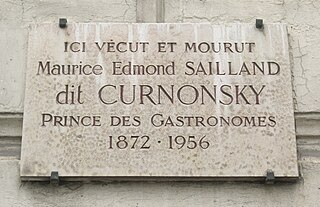
Maurice Edmond Sailland, better known by his pen-name Curnonsky, and dubbed the Prince of Gastronomy, was one of the most celebrated writers on gastronomy in France in the 20th century. He wrote or ghost-wrote many books in diverse genres and many newspaper columns. He is often considered the inventor of gastronomic motor-tourism as popularized by Michelin, though he himself could not drive. He was a student of Henri-Paul Pellaprat.

Ariel Wizman is a French musician, DJ, journalist and actor born in Casablanca, Morocco.

La Confrérie de la Chaîne des Rôtisseurs is an international gastronomic society founded in Paris in 1950. The Chaîne is based on the traditions and practices of the old French Royal Guild of Goose Roasters, whose authority gradually expanded to the roasting of all poultry, meat, and game. It is dedicated to the culinary arts, promoting and developing their gastronomic values while at the same time widening its focus to table art.
Johannes Peder Ejler Pedersen was a Danish Old Testament scholar and Semitic philologist.
Claes Cronstedt is an international lawyer and member of the Swedish Bar. He is one of the pioneers on Business and Human Rights.
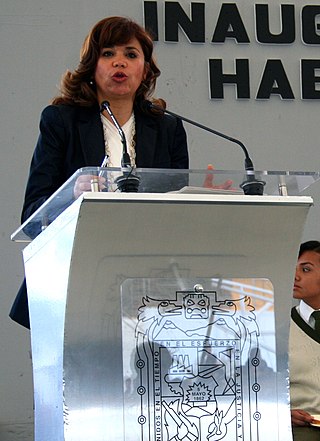
Blanca Alcalá Ruiz is a Mexican politician. From 2008 to 2011, she served as the mayor of Puebla, the capital city of the State of Puebla. She was the first female mayor in the history of the city. In August 2017 she was named Ambassador to Colombia.
Francis Coplan is a fictional French secret agent created by Paul Kenny, the nom de plume of Belgian authors Gaston Van den Panhuyse (1913-1995) and Jean Libert (1913-1981). He first appeared in print in 1953, and has since appeared in over 200 novels. He appeared in six Eurospy films released in the 1950s and 1960s, as well as a 1989 French miniseries and a long-running comic strip.
Joachim Winterlich is a retired German ski jumper and an active ski jumping coach.
Henri Rochon was a Canadian National tennis champion and Davis Cup tennis player.
The Dîner des trois empereurs or Three Emperors Dinner was a banquet held at Café Anglais in Paris, France on 7 June 1867. It consisted of 16 courses with eight wines served over eight hours.
Note by Note cuisine is a style of cooking based on molecular gastronomy, created by Hervé This. Dishes are made using pure compounds instead of using animal or plant tissues. Hervé This said the cuisine is like "a painter using primary colours, or a musician composing electroacoustic music, wave by wave, using a computer".

Mario A. Beaulieu is a Canadian politician. An advocate for nationalism in Quebec, he served as leader (2014–2015), interim leader (2018–2019) and president (2014–2018) of the Bloc Québécois (BQ); Beaulieu has been the Member of Parliament (MP) for La Pointe-de-l'Île since the 2015 election.
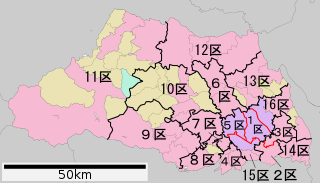
Saitama 5th district is a constituency of the House of Representatives in the Diet of Japan. It is located in Saitama Prefecture and covers Nishi, Kita, Minuma, Ōmiya and Chūō wards of the city of Saitama.
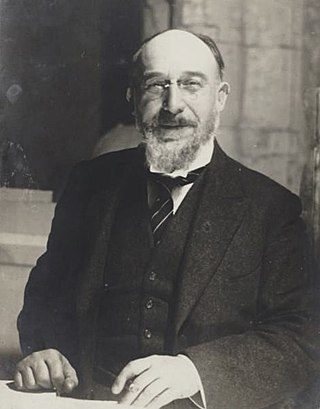
The Quatre petites mélodies is a 1920 song cycle for voice and piano by French composer Erik Satie. It is most notable for its opening lament, Élégie, which Satie composed in memory of his friend Claude Debussy. A typical performance lasts under 4 minutes.
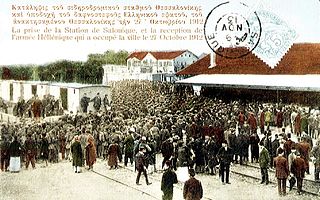
The Old Thessaloniki railway station was a station on the Chemins de fer Orientaux line in Thessaloniki. It was located near the port on Old Station Street at its junction with Voutyras Stavrou Street.










